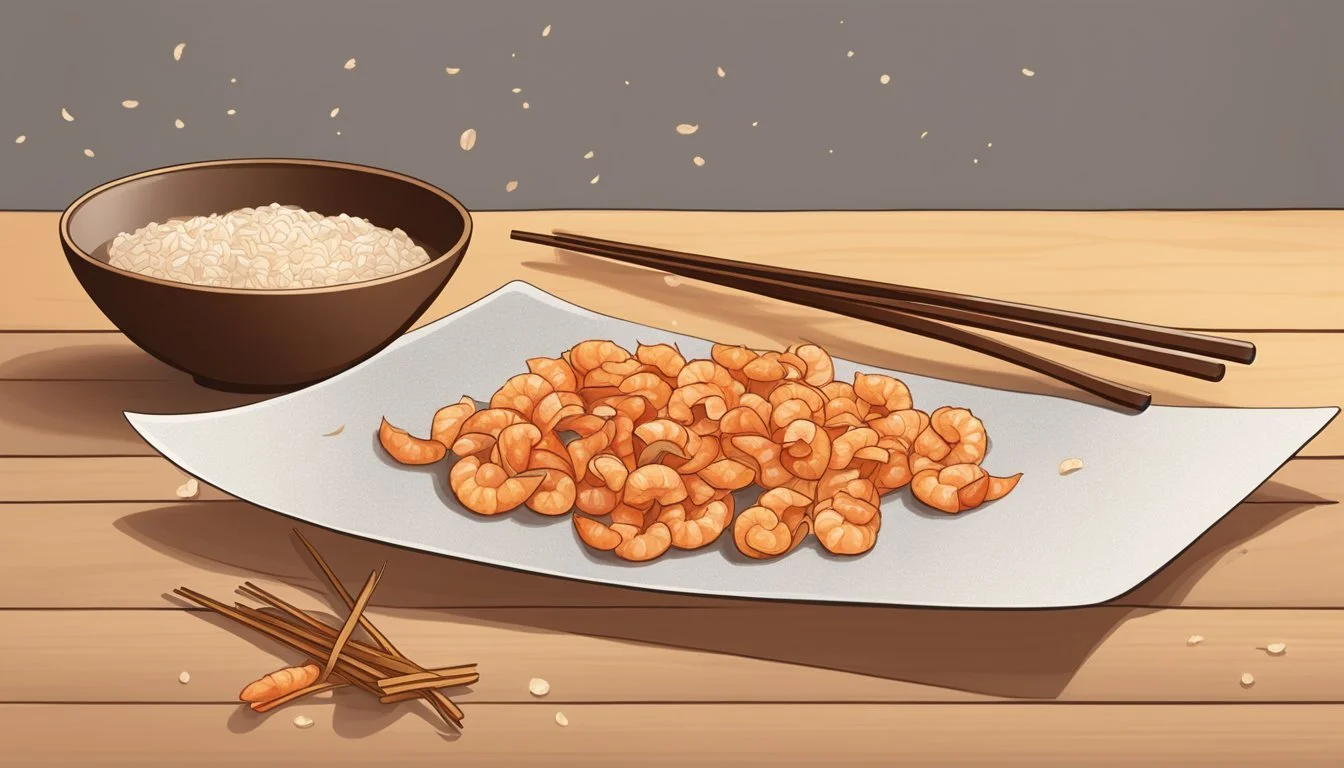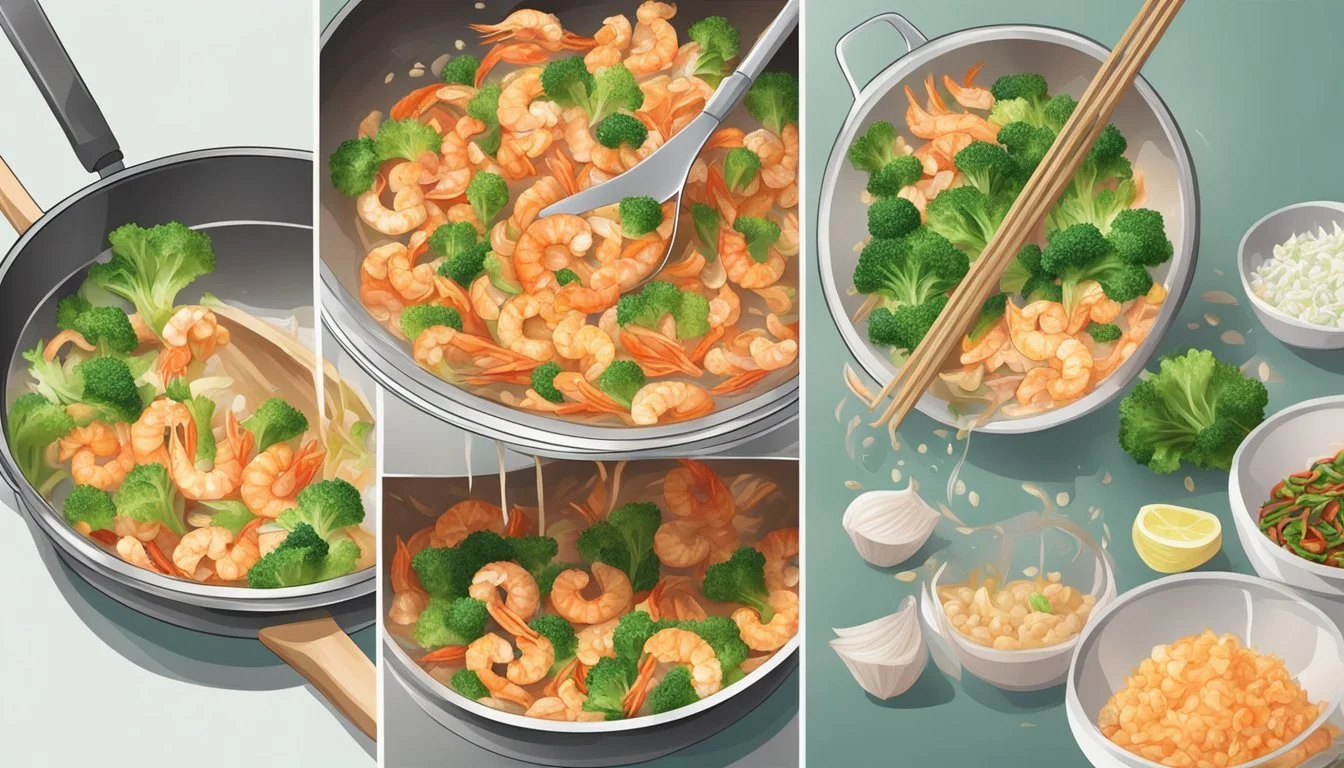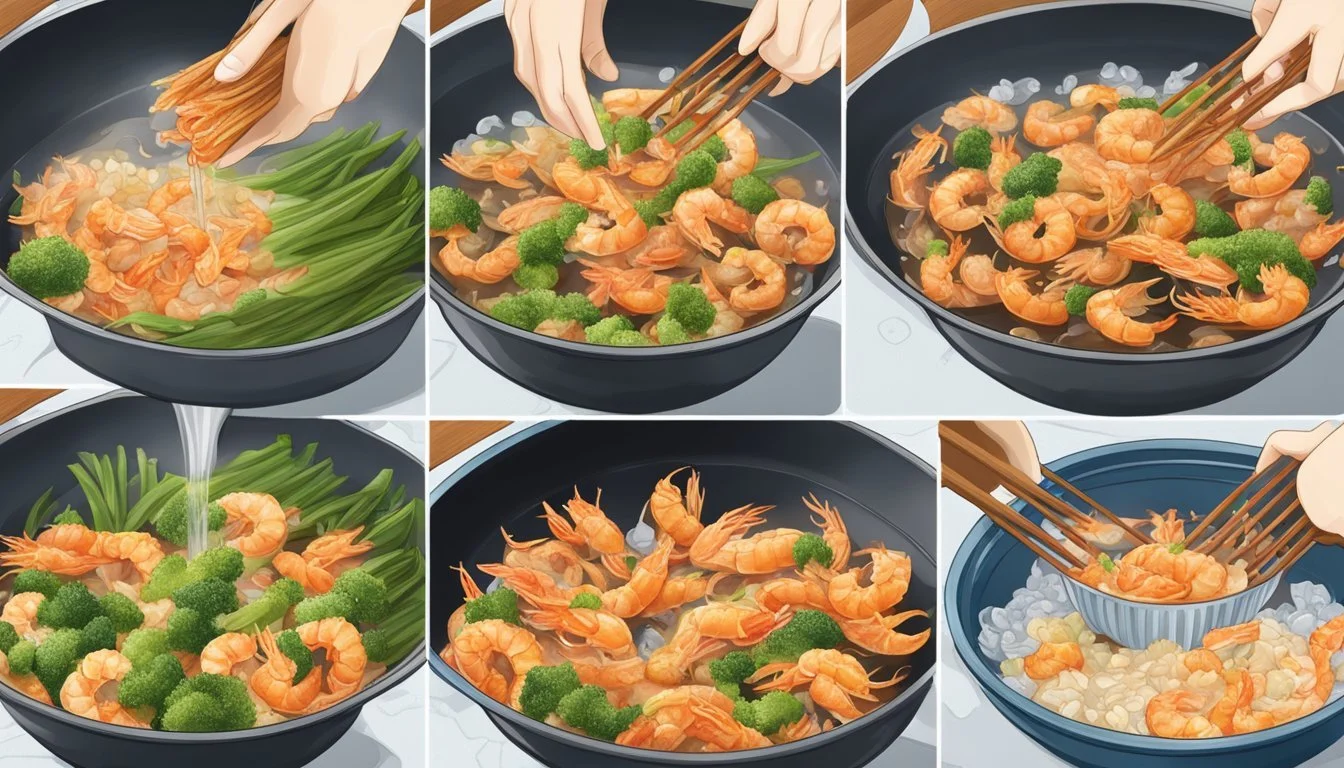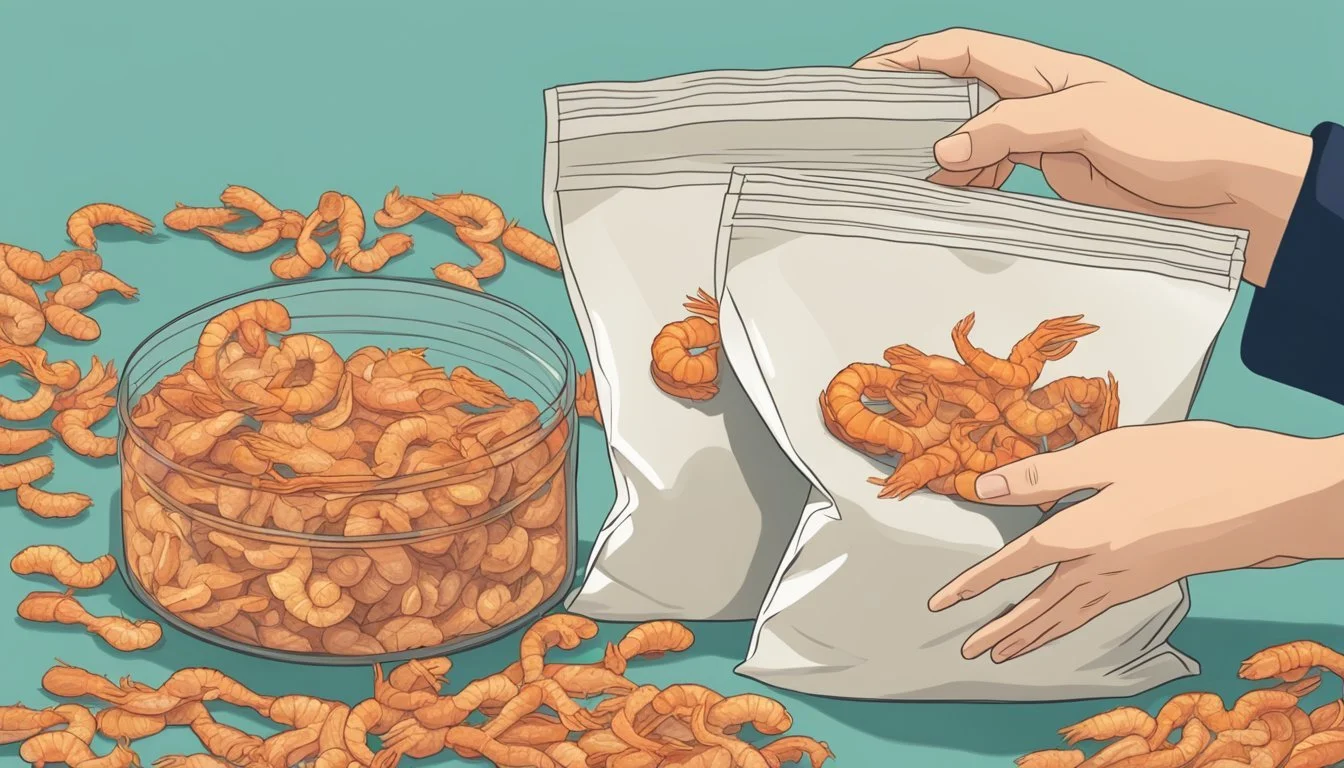How to Eat Xia Mi:
Your Guide to Enjoying Dried Shrimp
Dried shrimp, (What wine goes well with shrimp?) known as xia mi in Mandarin or ha mai in Cantonese, is a staple in Asian cuisine, cherished for its ability to impart a briny, umami-rich flavor to a plethora of dishes. These tiny crustaceans are sun-dried or dehydrated to preserve them, which concentrates their flavor and extends their shelf life. As a versatile ingredient, dried shrimp are often found in the pantry of many Asian households and are integral to the authentic taste of regional recipes.
To enjoy dried shrimp in cooking, they typically require rehydration, which involves soaking in hot water. This process softens them and makes them suitable for incorporation into various dishes. Depending on their size, soaking time can range from 10 to 20 minutes for smaller shrimp, while larger ones might need up to a few hours or an overnight soak in the refrigerator. Once rehydrated, they can be used whole, chopped, or ground into a paste, depending on the recipe's requirements, adding depth and complexity to food with their unique seafood flavor.
They can be seamlessly added to soups, stews, dumplings, fried rice, and noodles, enhancing the taste profile with their distinctive savory notes. Some cooks also use dried shrimp as a condiment by grinding them into a fine powder, which acts as a potent flavor enhancer for various dishes. This method of using dried shrimp showcases the ingredient's versatility and the subtle yet influential role it plays in culinary traditions across Asia.
What Are Dried Shrimp?
Dried shrimp are small, dehydrated crustaceans commonly used as a flavor enhancer in various Asian cuisines. They are prized for contributing a unique umami taste to dishes.
Origin and Cultural Significance
Dried shrimp, known as 海米 (hai mi) or 虾米 (xia mi) in Chinese, have a significant place in Asian culinary traditions. Historically, the practice of shrimp dehydration for preservation originated in coastal communities where seafood (What wine goes well with seafood?) was abundant. In Chinese cuisine, these shrimp are an integral part of both northern and southern cooking styles, symbolizing the diversity of regional flavors within China. Different Asian cultures incorporate dried shrimp into their recipes, showcasing its wide cultural relevance across the continent.
Nutritional Profile
Dried shrimp are a potent source of protein and essential nutrients. They offer a concentrated form of vitamins and minerals, including iodine, which is crucial for thyroid function. The nutrient density of dried shrimp makes them not only a flavorful addition to meals but also a beneficial one.
Nutrient Benefits Protein Supports muscle and tissue repair Iodine Essential for thyroid health Vitamins Various bodily functions Minerals Structural and enzymatic roles
In summary, dried shrimp serve a dual purpose in meal preparation – they enhance flavor through their umami quality and contribute valuable nutrients to one's diet.
Selecting and Storing Dried Shrimp
Selecting the best quality dried shrimp and employing proper storage techniques are crucial to maintaining their umami flavor and prolonging shelf life.
How to Choose the Best Quality
When shopping at Asian markets, look for dried shrimp that have a bright color and a pleasant, sea-breeze aroma. Shrimps should be uniform in size and devoid of any signs of moisture or a pungent smell, which can indicate spoilage. The presence of umami taste, a savory depth of flavor, suggests high quality and freshness.
Proper Storage Techniques
Once purchased, dried shrimp should be stored in an airtight container. This container needs to be kept either in the fridge or freezer to retain the shrimp's flavor and extend shelf life. In the fridge, they can last for a few months; in the freezer, they can be stored for up to a year. Always check the expiry date and ensure that, when using from the container, utensils are clean and dry to prevent introducing moisture.
Fridge Storage: Store in an airtight container for several months.
Freezer Storage: For long-term storage, keeping them in the freezer can extend their shelf life up to a year.
Preparation Methods
Before cooking with xia mi, or dried shrimp, it's essential to properly prepare them. Proper preparation enhances their texture and flavor, making them suitable for various culinary applications.
Pre-Soaking and Rehydrating
To begin using dried shrimp, pre-soaking is a crucial step. This process involves placing the dried shrimp in a bowl and covering them with water to rehydrate them. They should soak for 10-20 minutes; however, the exact time may vary based on the shrimp's size. After soaking, the shrimp will become plumper and softer, similar to the texture of fresh shrimp. Here's how one should approach this process:
Place the dried shrimp into a small bowl.
Cover the shrimp with warm or boiling water to expedite rehydration.
Wait for 10-20 minutes, until the shrimp have softened.
For those who prefer a quicker method, boiling water can be used to reduce the soaking time. Once rehydrated, the shrimp are ready for cooking, whether it be included whole in dishes such as dumplings or chopped for stir-fries.
Grinding into Powder or Paste
Another way to integrate dried shrimp into cooking is by grinding them into a powder or paste. This is particularly useful for dishes requiring a more intense, distributed shrimp flavor. One can use a food processor to grind dried shrimp until they reach the desired consistency. Here are step-by-step instructions for grinding dried shrimp:
Pre-soak and rehydrate the dried shrimp as detailed above.
Drain the rehydrated shrimp thoroughly.
Place the shrimp into a food processor.
Pulse or grind until you achieve a fine powder or smooth paste, depending on the recipe's needs.
The resulting powder or paste can be incorporated into a variety of dishes, offering a depth of umami flavor that complements other ingredients. When creating shrimp paste, it's best to use a food processor to achieve a consistent texture. Whether powdered or pasted, the prepared dried shrimp should be stored properly until used to maintain their quality.
Cooking with Dried Shrimp
Dried shrimp add a distinctive umami flavor to dishes, infusing them with a meaty, seafood essence. These tiny culinary enhancers are a staple in Asian and Chinese kitchens, versatile in main dishes, soups, and as a boost to sauces.
Incorporation into Main Dishes
Stir-Fries: For a hearty stir-fry, dried shrimp should be rehydrated in warm water for 10-20 minutes until they become plump. After draining, they can be minced or added whole to the stir-fry, imparting a savory depth. Dishes like fried rice and pad thai benefit greatly from the shrimp's flavor.
Rehydrate: 10-20 minutes in warm water
Prepare: Drain, chop if necessary
Cook: Add to stir-fries for enhanced umami
Noodle and Pasta Dishes: Dried shrimp are often ground into a thick paste and incorporated into the noodle's cooking process. They meld with other ingredients such as garlic, ginger, and sauces to enrich the overall taste of the dish.
Grind dried shrimp into paste
Mix with garlic, ginger, and sauces
Combine with noodles or pasta
Using Dried Shrimp in Soups and Broths
In soups and broths, dried shrimp can be soaked and added directly to the pot, allowing the flavors to simmer and meld with the other ingredients. A classic example is their addition to Asian soup bases, where they contribute a layer of complexity and seafood nuance.
Bullet Point: Soak and simmer dried shrimp in soups
Example: Asian seafood soups and broths
Enhancing Sauces, Marinades, and Condiments
Condiments: Condiments such as XO sauce make extensive use of dried shrimp to achieve a rich, savory taste. The shrimp are typically minced and sautéed with chili peppers, onions, and sometimes fish sauce, creating a condiment that can elevate even the simplest dishes.
XO sauce: Sauté minced dried shrimp with chili and onions
Marinades: When combined with ingredients like soy sauce and ginger, dried shrimp can transform a simple marinade into a flavor-packed concoction that imparts a meaty umami character to proteins and vegetables.
List of Marinade Ingredients:
Dried shrimp (minced)
Soy sauce
Ginger
By skillfully integrating dried shrimp in various forms, chefs and home cooks can bring out the rich, savory flavors of their culinary creations, making the most out of this versatile ingredient for elevated taste experiences.
Innovative Culinary Creations
Xia mi, known for its intense flavor and versatility, opens a realm of culinary creativity. Chefs incorporate this dehydrated seafood into various dishes, ranging from light starters to hearty mains.
Salads and Appetizers
In salads, dried shrimp add a savory crunch that's both surprising and delightful. They can be lightly tossed with greens, providing a bold umami flavor to refreshing dishes. One might encounter them sprinkled over a papaya salad, offering a saline contrast to the sweet, tangy fruits. Here's how one can utilize dried shrimp within these starter dishes:
Toss xiam mi with mixed greens, cherry tomatoes, and a citrus vinaigrette for a zesty and umami-rich salad.
Top avocado halves with a mixture of dried shrimp, cilantro, and diced mango for a simple yet flavor-packed appetizer.
Dumplings and Meatballs
In the creation of dumplings and meatballs, dried shrimp are often ground to a fine powder, augmenting the taste profile with their distinctive seafood essence. Let's look at their application in these forms:
Incorporate ground dried shrimp into dumpling fillings, alongside minced pork and chives (how long do chives last?), to elevate the savory aspect of the bite-sized delights.
Mix ground dried shrimp into meatballs to imbue them with a deep, complex flavor dimension, making them standout components in soups or as part of a main course.
Health Considerations
When incorporating xia mi (dried shrimp) into one's diet, it is essential to consider their high protein content and the potential for a relatively high sodium level. Individuals with dietary restrictions, especially those pertaining to seafood, should take precaution.
Seafood Allergies and Dietary Restrictions
People with seafood allergies should avoid xia mi, as it is a common allergen within this category. Consumption of dried shrimp by someone with a seafood allergy can trigger a range of adverse reactions, from mild symptoms to potentially life-threatening conditions like anaphylaxis.
Regarding dietary restrictions, it is crucial to note that xia mi can be salty, and therefore, those who are monitoring their sodium intake should consume it in moderation. The drying process often includes salting the shrimp, which helps preserve them but also increases the sodium content. This can be a concern for individuals managing conditions such as hypertension.
While dried shrimp are praised for their high protein content, providing a concentrated source compared to their fresh counterparts, balance and moderation remain key for a healthy diet, particularly in the context of overall sodium consumption and individual allergy considerations.
Purchasing and Substitution Tips
When seeking dried shrimp, commonly known as xiā mì or hǎi mì, consumers require reliable purchasing options and viable substitutions in case of unavailability. It's essential to know where to find them and what alternatives align with the distinct, salty-sweet umami flavor of dried shrimp if they're not accessible.
Finding Dried Shrimp in Stores
To locate dried shrimp in stores, shoppers should visit local Asian markets, which typically carry a variety of traditional Asian ingredients. Dried shrimp may be found in the dry goods section, labeled as xiā mì in Mandarin or hǎi mì in Cantonese. For convenience, online marketplaces like Amazon also stock dried shrimp, offering various brands and package sizes.
Local Asian markets: Check the dry goods or seafood section.
Online Retailers: Search for "dried shrimp" on e-commerce platforms like Amazon.
Alternatives to Dried Shrimp
In the event that dried shrimp are not available, there are several substitutions that can impart a similar umami quality to dishes:
Shrimp Paste: A concentrated form of shrimp flavor, used in smaller quantities.
Fish Sauce: Adds a similar fishy undertone to recipes when dried shrimp are absent.
Dried Anchovies: (What wine goes well with anchovies?) They provide a textural similarity with a subtle taste difference.
Kelp Stock: A vegetarian option offering umami flavor, though lacking the fishy taste.
For authentic flavor, no substitution will perfectly mimic dried shrimp, but these alternatives can be used to approximate the desired taste profile in various recipes.







